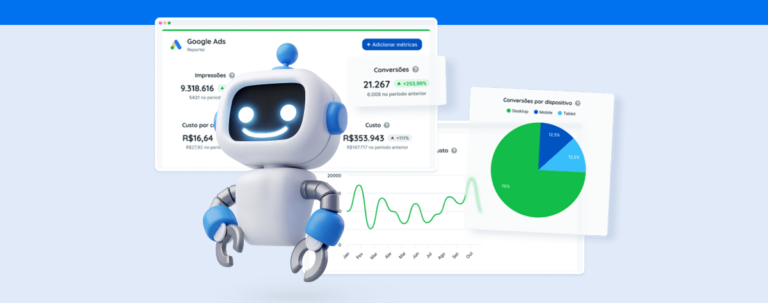Learn about the benefits of the Google Display Network advertising and how to make the most of this tool
You’ve probably come across featured ads at the top and sides of website pages online. They’re part of ad campaigns on the Google Display Network.
You can access the Display Network from your Google Ads account. It’s one most popular tools to help brands reach a larger audience and increase awareness of their products, services, or content.
This article has everything you need to know about the Display Network. We cover the benefits for anyone running ads on Google and how to create your campaign. Keep reading!
What is the Google Display Network?
Over a million partner websites and apps associated with the world’s largest search engine make up the Display Network. You can serve ads for brands, products, and services on their pages.
Advertisers can run visually attractive ad campaigns on the Display Network to draw visitors to their sites and target their audience’s interests.
You’ll see these ads like banners, videos, and other formats to draw people who might be interested in what businesses have to offer.
The display campaign model of advertising gets your ads to the right audience at the right time. That leads to increased visibility, traffic on your website, and even conversions.
Benefits of using the Google Display Network
The Display Network campaigns have many benefits for businesses that aim to advertise. Here are just a few:
- Reach larger or new audiences. There are more than 35 million partner websites and apps from around the globe, plus sites owned by Google (like YouTube and Gmail).
- Set specific campaign goals to help you reach your marketing objectives (like increasing awareness and boosting traffic and conversions).
- Use machine learning to help you establish targeting, bids, and formats to use. You can serve strategic campaigns for the best results possible.
The Display Network vs The Search Network
When you invest in Google Ads, you’ll notice campaigns differ according to the advertising goals of the brand or product. Two of the most common by far are display ads and search ads.
While the Display Network’s focus is giving your businesses more visibility on Google’s partner sites, the Search Network is about search engine results.
So, when someone starts looking for what you offer on Google, your ads show up and attract them to your websites.
The Display Network shows your ads to people even if they are not actively searching for what your business has to offer. That makes it perfect for remarketing campaigns.
Does that make it more efficient than the Search Network? It depends on your goals. One hot tip is to include both in your strategy for two ways of reaching your target group.
What Ad formats can I use on the Google Display Network?
You may think banners are the only way to serve your Display ads, but that’s not the case. There are other formats that can help you reach your target audience.
Images will stand out for their potential to attract users and promote engagement, but here are a few more formats:
- Short texts like the Search Network ads. You can adapt them for Display and add them to the sides of site pages.
- Banners on the sides or footer of YouTube videos (that show up on YouTube’s homepage too).
- Rich Media combines different formats (like carousels and animations) so users get to decide how they’d like to see your ads.
How to create Google Display Campaigns
You can create Display campaigns from a Google Ads account. Log in to your client’s account or your own, click the + button and select New Campaign. Follow these steps next:
- Select a goal. You can choose to boost sales, leads, traffic, or brand awareness and reach. Once you’ve done that, select “Display Network only” as the campaign type.
- Set the preferences of your campaign like display location, languages, frequency, period, etc.
- Set a budget to establish daily costs. That will directly affect how successful your campaign is. Through bidding (which you can automize), you decide how to spend your budget.
- Establish your targeting strategy. Select the audiences you want your ads to reach. You can choose optimized targeting to help you out.
- Create your Ads. Develop responsive ads on different media. Google will automatically insert them where they fit best (websites, apps, YouTube, or Gmail). Review and publish your campaign.
- Monitor results. Like any digital marketing strategy, monitoring Display campaigns is essential to successful results.
Count on Reportei for a more efficient and strategic analysis of Display Network campaigns!
It only takes a few clicks to generate customized Google Ads reports complementing your analysis with text, images, or videos.





